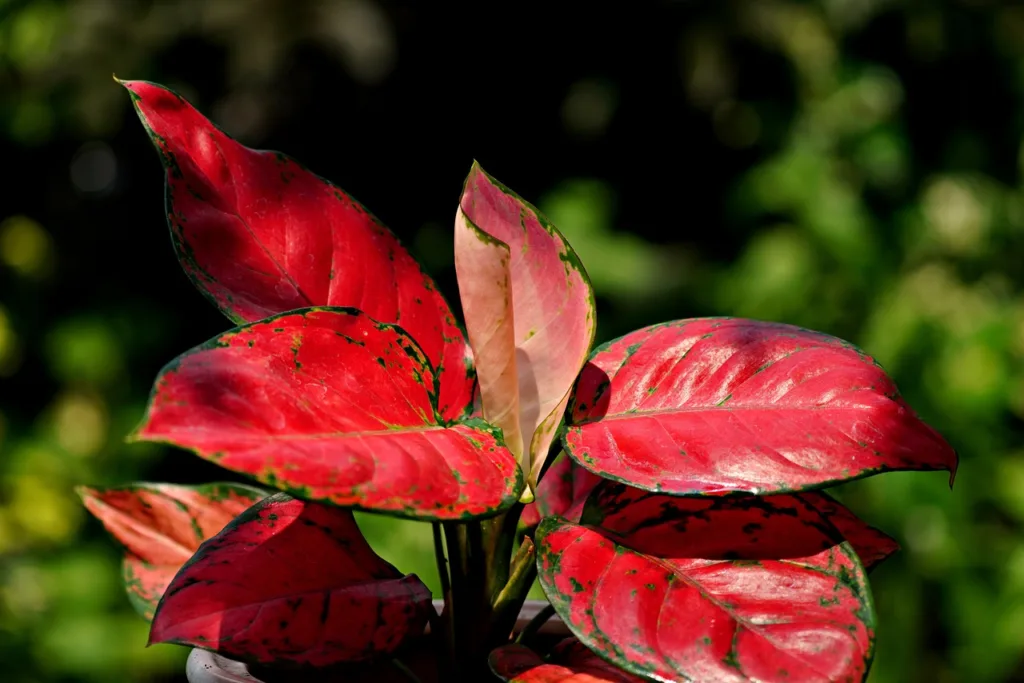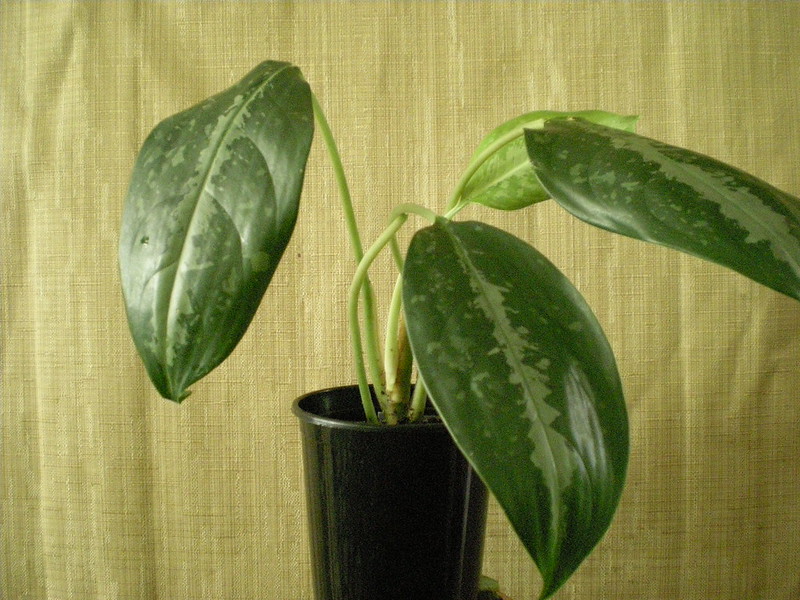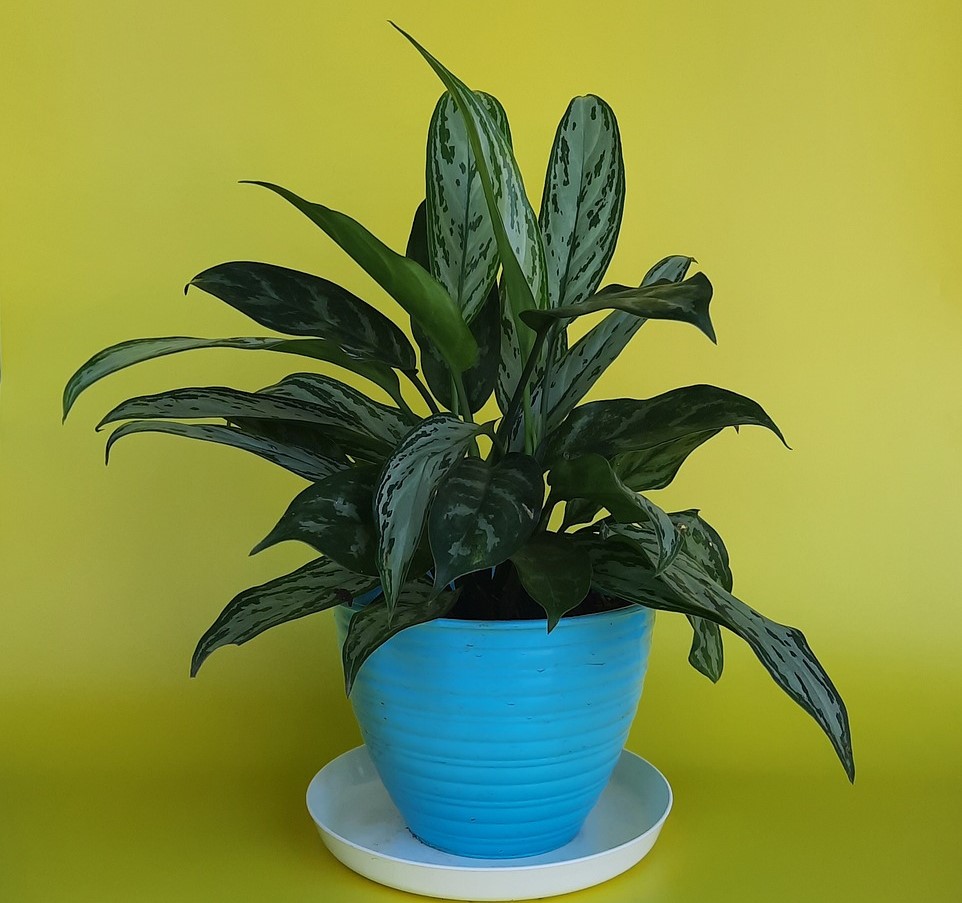Are looking to add a touch of lush greenery to your home or office? Look no further than the beautiful Aglaonema plant.
With its vibrant foliage and low-maintenance nature, this tropical beauty is perfect for both beginners and experienced plant enthusiasts.
In this comprehensive guide, we will walk you through everything you to know about planting, growing, and caring for Aglaonema. So let’s dive right in and discover the secrets to cultivating this stunning plant!
What is Aglaonema
Aglaonema, commonly known as Chinese Evergreen, is an all-around and popular genus of tropical plants appreciated for their attractive leaves and adaptability to indoor environments.
Belonging to the Araceae family, Aglaonema species are native to Southeast Asia and are widely cultivated as ornamental houseplants.
Aglaonema’s captivating foliage and ease of care make it a popular choice for indoor gardening, bringing beauty and greenery to homes, offices, and other interior spaces.
| Attribute | Details |
|---|---|
| Common Name | Chinese Evergreen |
| Genus | Aglaonema |
| Family | Araceae |
| Native Region | Southeast Asia, New Guinea |
| Growth Habit | Herbaceous perennial |
| Light Requirements | Indirect light tolerates low-light conditions |
| Watering Needs | Moderate |
| Leaf Characteristics | Lance-shaped, various patterns (silver, green, red) |
| Indirect light tolerates low light conditions | Yes |
| Adaptability | Tolerant of different environments |

Key Characteristics of Aglaonema
Foliage: Aglaonema is prized for its vibrant and diverse foliage. The leaves vary in size, shape, and color, with patterns ranging from solid green to variegated combinations of green, silver, red, and pink.
Hardiness: Chinese Evergreens are recognized for their hardiness and resilience. They can thrive in indoor conditions and are relatively forgiving, making them suitable for both novice and experienced plant enthusiasts.
Light Requirements: Aglaonema adapts well to low to medium light conditions, making them excellent choices for spaces with limited natural light. While they can tolerate low light, they may exhibit more vibrant colors in brighter conditions.
Watering Needs: These plants prefer consistently moist but not waterlogged soil. Allow the top inch of the soil to dry out between waterings. Overwatering can lead to root rot, so it’s essential to strike a balance.
Temperature Range: Aglaonema thrives in typical indoor temperatures ranging from 65°F to 75°F (18°C to 24°C). They are sensitive to cold drafts and should be protected from temperature extremes.
Toxicity: Chinese Evergreens contain compounds that can be toxic if ingested. Keep them out of reach of pets and children, and handle them with care.
Air-Purifying Qualities: Aglaonema has been recognized for its air-purifying capabilities, helping to filter and improve indoor air quality by removing certain pollutants.
Propagation: Propagation is commonly done through stem cuttings or division. Healthy stems with nodes can be rooted in soil or water to create new plants.
Container Gardening: Aglaonema is well-suited for container gardening and is often potted in decorative containers, adding a touch of elegance to indoor spaces.
Selecting the Right Aglaonema Variety
Aglaonema, also known as Chinese Evergreen, offers a wide range of varieties, each with its unique characteristics.
Before diving into planting, it’s essential to choose the right variety that suits your preferences and growing conditions. Here are a few popular Aglaonema varieties:
- Aglaonema ‘Silver Bay’: Known for its silver-green leaves with dark green veins, this variety thrives in low to medium-light conditions and adds a touch of elegance to any space.
- Aglaonema ‘Red Siam’: If you’re seeking a vibrant pop of color, this variety is for you. With its deep green leaves and red veins, ‘Red Siam’ demands attention and thrives in medium to bright indirect light.
- Aglaonema ‘Emerald Beauty’: With its glossy, emerald green leaves, this variety exudes a classic charm. It can adapt to low light conditions, making it a popular choice for indoor spaces with limited natural light.
Now that you’ve selected your preferred Aglaonema variety, let’s move on to the planting process.

Planting Aglaonema
Successfully planting Aglaonema involves creating the ideal environment for the plant to flourish. Follow these steps to ensure a healthy start for your Aglaonema:
Choosing the Right Container
Select a container with drainage holes to prevent waterlogging, as excess moisture can lead to root rot. Ensure the chosen pot is slightly larger than the current root ball. This will allow the roots to grow as the plant matures.
Preparing the Potting Mix
Aglaonema thrives in well-draining soil. Prepare a potting mix by combining equal parts of peat moss, perlite, and rich organic compost. This mix retains moisture without becoming overly saturated.
Planting the Aglaonema
Place the Aglaonema in the center of the pot, making sure the top of the root ball sits just below the rim of the container. Gently fill the remaining space with the potting mix, ensuring the roots are adequately covered. Pat down the soil lightly to remove any air pockets.
Growing Aglaonema
Now that your Aglaonema is happily planted, let’s explore the key aspects of growing this beauty.
Light Requirements
Aglaonema is renowned for its ability to adapt to different light conditions, making it an excellent choice for both bright and low-light environments.
However, it thrives best in indirect, medium to bright light. Direct sunlight can scorch the leaves and cause them to lose their vibrant colors. Place your Aglaonema near a north-facing window or in a well-lit room away from direct sunlight.
Watering Needs
Finding the right balance when it comes to watering is crucial for Aglaonema’s well-being. Overwatering can lead to root rot, while underwatering can cause the leaves to wilt.
Aim to keep the soil slightly moist, but never allow it to become waterlogged. Avoid letting the plant sit in standing water.
As a general rule of thumb, water your Aglaonema when the top inch of soil feels slightly dry to the touch.

Temperature and Humidity
Aglaonema thrives in average room temperatures ranging from 65°F to 80°F (18°C to 27°C). These plants are sensitive to cold drafts, so make sure to keep them away from chilly windows or doors during winter.
As for humidity, Aglaonema is adaptable and can tolerate a range of humidity levels. However, they will appreciate higher humidity.
Consider using a humidifier or placing the plant on a tray filled with water and pebbles to increase humidity levels.
Caring for Aglaonema
To ensure your Aglaonema thrives and maintains its vibrant appearance, follow these essential care tips:
Fertilizing
Aglaonema benefits from regular feeding during the growing season, typically from spring to fall. Use a balanced, water-soluble fertilizer once a month or follow the manufacturer’s instructions. Avoid fertilizing during winter when the plant is in its dormant phase.
Pruning
Pruning helps maintain the compact shape and overall health of your Aglaonema. Remove any yellowing or damaged leaves by cutting them off at the base of the stem. If the plant becomes leggy over time, you can also trim the stems back to promote bushier growth.
Pest Control
Aglaonema is relatively resistant to pests. However, on rare occasions, it may encounter issues such as mealybugs or spider mites.
Regularly inspect your plant for any signs of pest infestation, such as tiny webs or cotton-like clusters. If detected, treat the affected areas with a gentle insecticidal soap or wipe the leaves with a damp cloth.
Propagation
If you wish to expand your Aglaonema collection or share it with friends, propagation is the way to go. The most common method of propagation is through stem cuttings.
Cut a healthy stem just below a node and place it in a container with a moist rooting mix. Keep the cuttings warm and humid until they develop roots, usually within a few weeks.
| Caution: While Chinese Evergreens are generally safe for indoor environments, it’s essential to be aware of their toxicity and take precautions to prevent ingestion by pets and children. |

Conclusion
Congratulations! You are now equipped with the knowledge to plant, grow, and care for Aglaonema successfully.
Remember to select the right variety that suits your preferences and growing conditions. Ensure your Aglaonema receives adequate light, water, and temperature.
Don’t forget regular fertilizing, pruning, and pest control to maintain its health and vibrancy. By following these guidelines, your Aglaonema will thrive and bring beauty and life to your space.
Start your Aglaonema journey today and enjoy the rewards of nurturing this stunning tropical plant!
People Also Ask
- Does Aglaonema need sunlight?
- Aglaonema prefers indirect light and can tolerate low light conditions, making it suitable for indoor spaces with limited sunlight.
- Is Aglaonema good inside the house?
- Yes, Aglaonema is an excellent choice for indoor spaces due to its adaptability to low light and ability to thrive as a houseplant.
- Is Aglaonema a lucky plant?
- Aglaonema is often considered a symbol of good luck and prosperity, making it a popular choice for indoor plants.
- Do Aglaonema need a lot of water?
- Aglaonema prefers moderate watering. Allow the top inch of soil to dry before watering, and avoid overwatering to prevent root rot.
